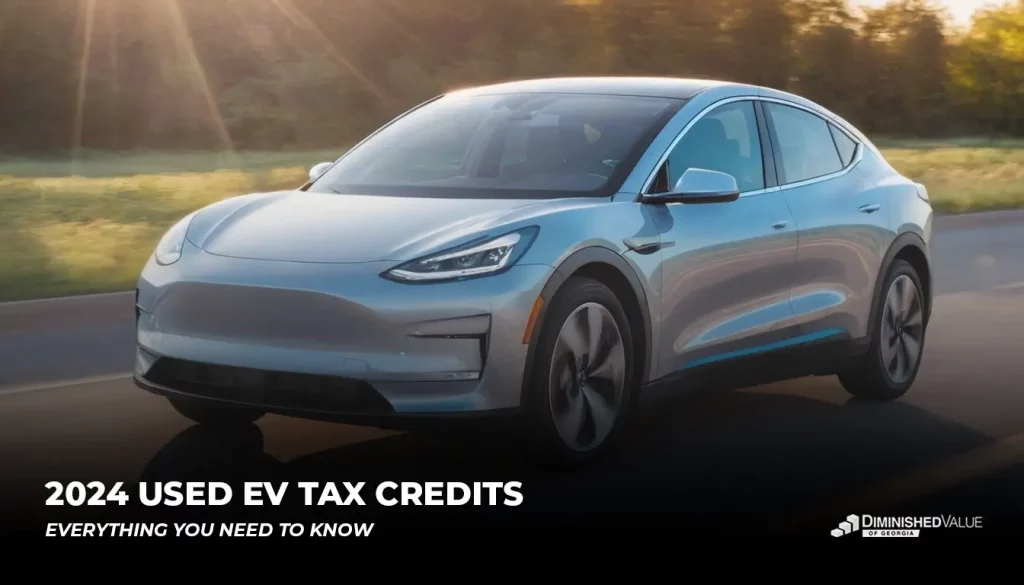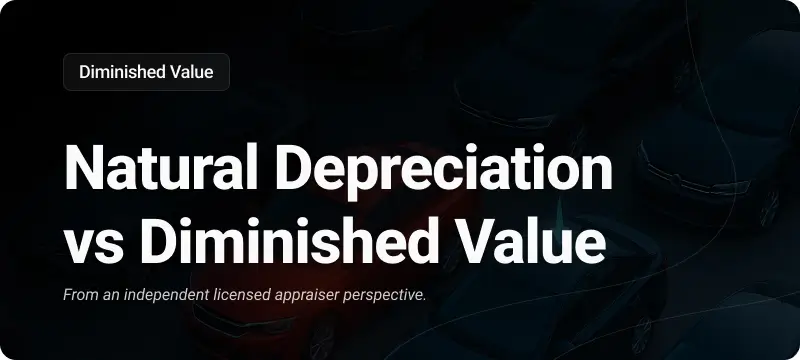Imagine cruising down the sunny streets of Atlanta in your sleek, eco-friendly electric vehicle (EV). The breeze is light, the skies are clear, and your conscience is even clearer, knowing that your choice is helping the planet. But what makes this image even more appealing?
The opportunity to benefit financially from your environmentally conscious decision. In 2024, the Federal Tax Credit for used EVs has become a game-changer for many, offering up to $4,000 in incentives. This is not just a step towards sustainable mobility but also a smart financial move for forward-thinking individuals.

2024 Used EV Tax Credit: Everything You Need To Know (PDF)
Understanding the Federal Tax Credit
In a world where eco-friendly choices are increasingly rewarded, the 2024 Federal Tax Credit stands out. It applies to pre-owned all-electric, plug-in hybrid, and fuel cell electric vehicles purchased from January 1, 2023. Here’s what you need to know:
- Credit Amount: 30% of the sale price, capped at $4,000.
- Nonrefundable Nature: The credit can’t exceed your tax liability and doesn’t carry over to future tax years.
Eligibility Criteria:
- Purchase of a previously owned, qualified plug-in electric vehicle (PEV) or fuel cell vehicle (FCV).
- The purchaser should not be the original owner or claimed as a dependent on another person’s tax return.
- The credit has not been claimed for another used clean vehicle within three years before the purchase.
- Income thresholds apply, varying based on filing status.
Vehicle Requirements:
- Produced by a qualified manufacturer (except for FCVs).
- Sale price below $25,000.
- Model year at least two years prior to the purchase year.
- Vehicles must be primarily used in the United States and have a gross weight under 14,000 pounds.
- Plug-in electric vehicles (PEVs) need a minimum battery capacity of 7 kilowatt hours.
Sale Qualifications:
- Purchased from a licensed dealer.
- Compliance with specific dealer reporting requirements to the buyer and the IRS
The Unexplored Angles of the 2024 Used EV Tax Credit
While many sources cover the basics of the 2024 Used EV Tax Credit, few delve into the less discussed but crucial aspects:
- Economic Impact: This credit is not only a boon for environmentally conscious consumers but also stimulates the second-hand EV market. It encourages the turnover of vehicles, thereby accelerating the transition to a greener vehicle fleet nationwide.
- Dealer Compliance: The role of dealers is pivotal. Their registration with the IRS Energy Credits Online and adherence to reporting requirements ensure the smooth processing of the credit. This underscores the importance of buying from reputable dealers.
- Income Threshold Strategy: Taxpayers can strategically plan their purchase based on their modified AGI of either the current year or the previous year. This flexibility allows for maximizing the credit benefits.
- International Impact: The requirement that the vehicle must be primarily used in the United States subtly supports domestic EV usage, aligning with broader goals of reducing carbon emissions nationally.
| List of Used Plug-in Electric and Fuel Cell Vehicles That Qualify for the Federal Tax Credit | |||
|---|---|---|---|
| Make | Model | Model Year | Vehicle Type |
| Audi | A3 e-tron | 2016–2018 | Plug-in Hybrid |
| Audi | A3 e-tron ultra | 2016 | Plug-in Hybrid |
| Audi | A7 TFSI e Quattro | 2021–2022 | Plug-in Hybrid |
| Audi | A8 L 60 TFSI e Quattro | 2021 | Plug-in Hybrid |
| Audi | A8L PHEV | 2020 | Plug-in Hybrid |
| Audi | e-tron | 2019, 2021–2022 | Electric Vehicle |
| Audi | e-tron Sportback | 2020–2022 | Plug-in Hybrid |
| Audi | Q5 PHEV | 2020 | Plug-in Hybrid |
| Audi | Q5 TFSI e Quattro | 2021–2022 | Plug-in Hybrid |
| Bentley | Bentayga Hybrid SUV | 2020–2021 | Plug-in Hybrid |
| BMW | 330e | 2016–2018, 2021–2022 | Plug-in Hybrid |
| BMW | 330e xDrive | 2021–2022 | Plug-in Hybrid |
| BMW | 530e | 2018–2022 | Plug-in Hybrid |
| BMW | 530e xDrive | 2018–2022 | Plug-in Hybrid |
| BMW | 740e | 2017 | Plug-in Hybrid |
| BMW | 740e xDrive | 2018–2019 | Plug-in Hybrid |
| BMW | 745e xDrive | 2020–2022 | Plug-in Hybrid |
| BMW | i3 (60 Ah) Sedan | 2017 | Electric Vehicle |
| BMW | i3 Sedan | 2014–2021 | Electric Vehicle |
| BMW | i3 Sedan with Range Extender | 2014–2021 | Plug-in Hybrid |
| BMW | i3s Sedan | 2018–2021 | Electric Vehicle |
| BMW | i3s Sedan with Range Extender | 2018–2021 | Plug-in Hybrid |
| BMW | i4 Gran Coupe | 2022 | Electric Vehicle |
| BMW | i8 | 2014–2017 | Plug-in Hybrid |
| BMW | i8 Coupe | 2019–2020 | Plug-in Hybrid |
| BMW | i8 Roadster | 2019–2020 | Plug-in Hybrid |
| BMW | iX xDrive50 | 2022 | Electric Vehicle |
| BMW | X3 xDrive30e | 2020–2021 | Plug-in Hybrid |
| BMW | X5 xDrive40e | 2016–2018 | Plug-in Hybrid |
| BMW | X5 xDrive45e | 2021–2022 | Plug-in Hybrid |
| Cadillac | ELR | 2014–2016 | Plug-in Hybrid |
| Chevrolet | Bolt | 2017–2021 | Electric Vehicle |
| Chevrolet | Bolt EV | 2022 | Electric Vehicle |
| Chevrolet | Bolt EV EUV | 2022 | Electric Vehicle |
| Chevrolet | Spark EV | 2014–2016 | Electric Vehicle |
| Chevrolet | Volt | 2011–2019 | Plug-in Hybrid |
| Chrysler | Pacifica PHEV | 2017–2022 | Plug-in Hybrid |
| Fiat | 500e | 2013–2019 | Electric Vehicle |
| Ford | C-Max Energi | 2013–2017 | Plug-in Hybrid |
| Ford | E-Transit | 2022 | Electric Vehicle |
| Ford | Escape Plug-in Hybrid | 2020–2022 | Plug-in Hybrid |
| Ford | F-150 Lightning (Standard, Extended) | 2022 | Electric Vehicle |
| Ford | Focus Electric | 2012–2018 | Electric Vehicle |
| Ford | Fusion Energi | 2013–2020 | Plug-in Hybrid |
| Ford | Mustang Mach-E | 2021–2022 | Electric Vehicle |
| Genesis | G80 | 2022 | Electric Vehicle |
| Honda | Clarity Plug-in Hybrid | 2018–2021 | Plug-in Hybrid |
| Hyundai | Ioniq 5 | 2022 | Electric Vehicle |
| Hyundai | Ioniq Electric Battery Vehicle | 2017–2021 | Electric Vehicle |
| Hyundai | Ioniq Plug-In Hybrid Electric Vehicle | 2018–2022 | Plug-in Hybrid |
| Hyundai | Kona Electric Vehicle | 2019–2022 | Electric Vehicle |
| Hyundai | Nexo Blue Fuel Cell Vehicle | 2019–2022 | Plug-in Hybrid |
| Hyundai | Nexo Fuel Cell Vehicle | 2019–2022 | Fuel Cell Vehicle |
| Hyundai | Santa Fe Plug-In Hybrid | 2022 | Fuel Cell Vehicle |
| Hyundai | Sonata Plug-In Hybrid Vehicle | 2016–2019 | Plug-in Hybrid |
| Hyundai | Tucson Plug-In Hybrid | 2022 | Plug-in Hybrid |
| Jeep | Grand Cherokee 4xe | 2022 | Plug-in Hybrid |
| Jeep | Wrangler 4xe | 2021–2022 | Plug-in Hybrid |
| Kia | EV6 | 2022 | Electric Vehicle |
| Kia | Niro EV | 2019–2022 | Electric Vehicle |
| Kia | Niro PHEV | 2018–2022 | Plug-in Hybrid |
| Kia | Optima PHEV | 2017–2020 | Plug-in Hybrid |
| Kia | Sorento PHEV | 2022 | Plug-in Hybrid |
| Kia | Soul EV | 2015–2020 | Electric Vehicle |
| Lexus | NX Plug-In Hybrid | 2022 | Plug-in Hybrid |
| Lincoln | Aviator Grand Touring | 2020–2022 | Plug-in Hybrid |
| Lincoln | Corsair Grand Touring | 2021–2022 | Plug-in Hybrid |
| Lucid | Air (All Models) | 2022 | Electric Vehicle |
| Mercedes-Benz | B-Class EV (B250e) | 2014–2017 | Electric Vehicle |
| Mercedes-Benz | EQB SUV (All Models) | 2022 | Electric Vehicle |
| Mercedes-Benz | EQS Sedan (All Models) | 2022 | Electric Vehicle |
| Mercedes-Benz | GLC350e 4matic | 2018–2019 | Plug-in Hybrid |
| Mercedes-Benz | GLC350e 4matic EQ | 2020 | Plug-in Hybrid |
| Mercedes-Benz | GLE550e 4matic PHEV | 2016–2018 | Plug-in Hybrid |
| Mercedes-Benz | S550e PHEV | 2015–2017 | Plug-in Hybrid |
| Mercedes-Benz | S560e EQ PHEV | 2020 | Plug-in Hybrid |
| MINI | Cooper S E Countryman ALL4 | 2018–2022 | Plug-in Hybrid |
| MINI | Cooper S E Hardtop | 2020–2022 | Electric Vehicle |
| Mitsubishi | i-MiEV | 2012–2014, 2016–2017 | Electric Vehicle |
| Mitsubishi | Outlander PHEV | 2018–2022 | Plug-in Hybrid |
| Nissan | Leaf (All Models) | 2011–2022 | Electric Vehicle |
| Polestar | Polestar 1 | 2020–2021 | Plug-in Hybrid |
| Polestar | Polestar 2 | 2021–2022 | Plug-in Hybrid |
| Porsche | Cayenne E-Hybrid (All models) | 2015–2021 | Plug-in Hybrid |
| Porsche | Cayenne E-Hybrid (All Models) | 2022 | Plug-in Hybrid |
| Porsche | Panamera E-Hybrid (All models) | 2014–2016, 2018–2021 | Plug-in Hybrid |
| Porsche | Panamera E-Hybrid (All Models) | 2022 | Plug-in Hybrid |
| Porsche | Taycan (All EV Models) | 2020–2021 | Electric Vehicle |
| Porsche | Taycan (All Models) | 2022 | Electric Vehicle |
| Rivian | EDV 700 | 2022 | Electric Vehicle |
| Rivian | R1S | 2022 | Electric Vehicle |
| Rivian | R1T | 2022 | Electric Vehicle |
| smart USA | Cabrio EV | 2013–2015, 2017–2018 | Electric Vehicle |
| smart USA | Coupe EV | 2013–2018 | Electric Vehicle |
| smart USA | EQ Fortwo Cabrio | 2019 | Electric Vehicle |
| smart USA | EQ Fortwo Coupe | 2019 | Electric Vehicle |
| Subaru | Crosstrek Hybrid | 2022 | Plug-in Hybrid |
| Subaru | Crosstrek Plug-In Hybrid | 2019–2021 | Plug-in Hybrid |
| Tesla | Model 3 | 2017–2022 | Electric Vehicle |
| Tesla | Model S | 2012–2021 | Electric Vehicle |
| Tesla | Model X | 2016–2021 | Electric Vehicle |
| Tesla | Model Y | 2020–2022 | Electric Vehicle |
| Tesla | Roadster | 2009–2011 | Electric Vehicle |
| Toyota | Mirai | 2016–2022 | Fuel Cell Vehicle |
| Toyota | Prius Prime Plug-In Hybrid | 2017–2022 | Plug-in Hybrid |
| Toyota | RAV4 EV | 2012–2014 | Electric Vehicle |
| Toyota | RAV4 Prime Plug-In Hybrid | 2021–2022 | Plug-in Hybrid |
| Volkswagen | e-Golf | 2015–2019 | Electric Vehicle |
| Volkswagen | ID.4 (All Models) | 2021–2022 | Electric Vehicle |
| Volvo | C40 Recharge | 2022 | Electric Vehicle |
| Volvo | S60 | 2019–2022 | Plug-in Hybrid |
| Volvo | S90 | 2018–2022 | Plug-in Hybrid |
| Volvo | V60 | 2020–2022 | Plug-in Hybrid |
| Volvo | XC40 Recharge | 2021–2022 | Electric Vehicle |
| Volvo | XC60 | 2018–2022 | Plug-in Hybrid |
| Volvo | XC90 | 2016–2022 | Plug-in Hybrid |
Conclusion
The 2024 Used EV Tax Credit is much more than a simple money-saving opportunity. It marks a significant shift towards more sustainable living choices. This incentive makes electric vehicles more affordable for more people, underlining the power of personal decisions in contributing to environmental protection. As we adapt to these changes, it’s worth pondering: what other creative measures could speed up our move toward a cleaner and more environmentally friendly future?
Click here to learn more about the Federal Tax Credits for Pre-owned Plug-in Electric and Fuel Cell Vehicles.



